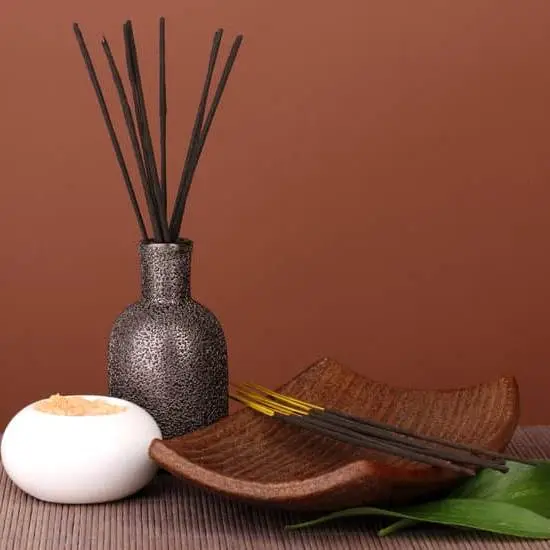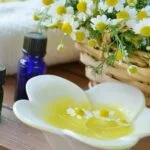Aromatherapy, also known as ಸುವಾಸನಾ ಚಿಕಿತ್ಸೆ (Suvaasana Chikitsa) in Kannada, is a holistic healing treatment that uses natural plant extracts to promote health and well-being. In this article, we will delve into the history and use of essential oils, understanding its benefits on the mind and body, its application in traditional Kannada medicine, and the science behind how essential oils work on our senses and nervous system.
The use of essential oils for therapeutic purposes dates back thousands of years, with roots in ancient civilizations such as the Egyptians, Greeks, and Chinese. Aromatherapy has been used to treat a variety of physical and emotional ailments, promoting relaxation, improving mood, and enhancing overall health. The practice has evolved over time and is now recognized as a complementary therapy in modern medicine.
In traditional Kannada medicine, aromatherapy has been integrated into various healing practices for centuries. The rich cultural heritage of Karnataka has contributed to the development of unique aromatic blends that are valued for their medicinal properties. As we explore the meaning of aromatherapy in Kannada, we will unravel the concept and cultural significance of this ancient healing art within the local context.
Understanding Aromatherapy
Aromatherapy is a holistic healing treatment that uses natural plant extracts to promote health and well-being. Essential oils, the key ingredients in aromatherapy, are highly concentrated liquids that are extracted from flowers, leaves, stems, bark, roots, or other parts of a plant. These essential oils can be used for a variety of purposes, including improving physical and mental health, as well as altering one’s mood.
Aromatherapy is known for its many benefits and effects on the mind and body. The inhalation of essential oils stimulates the part of the brain that is linked to emotions and memories. This can have a profound impact on one’s emotional state, helping to reduce stress, anxiety, and depression. Additionally, certain essential oils have been found to have antibacterial and antiviral properties, making them effective in fighting off illnesses and infections.
In traditional Kannada medicine, aromatherapy has been practiced for centuries as a natural way to heal the body and mind. Aromatherapy is deeply rooted in Kannada culture and is considered an important aspect of overall wellness.
Kannada practitioners have long utilized essential oils for their healing properties, incorporating them into massage oils, herbal preparations, and aromatherapeutic treatments. The cultural significance of aromatherapy in Kannada medicine highlights its enduring impact on the local community and the importance placed on maintaining balance and harmony within the body.
Aromatherapy in Traditional Kannada Medicine
Aromatherapy has been an integral part of traditional Kannada medicine for centuries, with the ancient practices still being relevant in modern applications. In Kannada culture, essential oils are used not only for their physical healing properties but also for their spiritual and emotional benefits. The practice of using aromatic plants and oils for medicinal and therapeutic purposes has been deeply rooted in Kannada tradition, with remedies passed down through generations.
One of the key aspects of aromatherapy in traditional Kannada medicine is the use of specific herbs and plants that are native to the region. For example, the use of sandalwood oil in Kannada aromatherapy is highly valued for its calming and cooling effects on both the mind and body. Additionally, herbs such as jasmine and rose are revered for their ability to uplift the spirit and enhance emotional well-being.
In modern applications, traditional Kannada aromatherapy practices have been integrated into wellness centers and spas, offering a unique blend of ancient wisdom and contemporary healing techniques. Practitioners combine age-old rituals with scientific knowledge to create therapeutic experiences that cater to both physical ailments and mental health concerns. As a result, aromatherapy has become an important aspect of holistic healthcare in Karnataka, promoting overall well-being in individuals seeking natural remedies.
| Traditional Practice | Modern Application |
|---|---|
| Use of specific native herbs and plants | Integrated into wellness centers and spas |
| Sandalwood oil for calming effects | Therapeutic experiences combining ancient wisdom with modern techniques |
The Science Behind Aromatherapy
Aromatherapy is the use of essential oils extracted from plants to promote healing and well-being. These essential oils are known for their aromatic properties and have been used for centuries in various cultures around the world.
In Kannada, the meaning of aromatherapy can be described as “ಸುಗಂಧ ಶಾಸ್ತ್ರ” (sugandha shastra), which translates to “fragrance science” in English. The practice of aromatherapy in Kannada culture has deep roots and is intertwined with traditional medicine and spiritual rituals.
Essential oils used in aromatherapy are believed to work on the senses and nervous system through various mechanisms. When these oils are inhaled, they stimulate the olfactory system and send signals to the brain, which can impact emotions, memory, and other cognitive functions. The molecules of the essential oils also have the potential to directly affect certain neurotransmitters in the brain, which may contribute to their calming or uplifting effects.
In recent years, scientific research has delved into the physiological effects of aromatherapy on the body. Studies have shown that certain essential oils can have anti-inflammatory, analgesic, and antimicrobial properties when applied topically or inhaled. Aromatherapy has also been found to reduce stress and anxiety levels, improve sleep quality, and enhance overall well-being. This growing body of evidence supports the use of aromatherapy as a complementary therapy for various health conditions.
| Language | Translation |
|---|---|
| Kannada | ಸುಗಂಧ ಶಾಸ್ತ್ರ (Sugandha Shastra) |
| English | Fragrance Science |
Exploring the Meaning of Aromatherapy in Kannada
Aromatherapy, known as ಸುಗಂಧ ಔಷಧ or Sugandha Aushadha in Kannada, is the practice of using essential oils and aromatic plant compounds for improving a person’s psychological or physical well-being. In Kannada culture, the concept of aromatherapy has been deeply rooted in traditional medicine and has been used for centuries as a natural healing remedy. The translation of the term reflects the cultural significance and understanding of aromatherapy in the Kannada language.
In Kannada culture, aromatherapy has been an integral part of traditional medicine practices, with essential oils being used for various therapeutic purposes. The use of aromatic substances to promote health and well-being can be traced back to ancient Ayurvedic practices that have influenced Kannada medicine. The concept revolves around harnessing the natural fragrances and healing properties of plants to alleviate ailments and balance mental and emotional states.
The cultural significance of aromatherapy in Kannada goes beyond just its medicinal benefits. It is also deeply intertwined with spiritual and religious practices, where aromatic substances are used during religious ceremonies and rituals to create a sacred ambiance. This connection between aromatherapy and spirituality highlights how essential oils are not only valued for their physical healing properties but also for their ability to enhance spiritual experiences.
Aromatherapy Techniques and Practices
Diffusion
One of the most common techniques used in aromatherapy is diffusion. This method involves dispersing essential oils into the air, allowing their aromatic scent to fill a room or space. There are various ways to achieve diffusion, including using diffusers, humidifiers, or simply adding a few drops of essential oil to a bowl of hot water. The inhalation of these dispersed oils can have a calming effect on the mind and body.
Topical Application
Another popular practice in aromatherapy is topical application, which involves applying essential oils directly to the skin. When diluted with a carrier oil, such as coconut oil or almond oil, essential oils can be safely massaged into the skin for therapeutic purposes. This method allows for the absorption of the oils through the skin and into the bloodstream, where they can exert their healing effects.
Inhalation
Inhalation is another effective way to experience the benefits of aromatherapy. By inhaling the aroma of essential oils directly from the bottle or by adding them to hot water for steam inhalation, individuals can harness their powerful properties. Through inhalation, essential oils can stimulate the olfactory system and influence brain activity, leading to various physiological and emotional responses.
These three techniques form the foundation of aromatherapy practices and are widely used to promote relaxation, alleviate stress, and support overall well-being. In traditional Kannada medicine, these methods have been employed for centuries as part of holistic healing approaches tailored to individual needs.
Choosing the Right Essential Oils for Aromatherapy
When it comes to aromatherapy, choosing the right essential oils is essential for reaping the full benefits of this practice. There are a wide variety of essential oils available, each with its own unique scent and therapeutic properties. In this comprehensive guide, we will explore some of the most popular scents used in aromatherapy and their corresponding benefits.
Lavender
One of the most well-known and widely used essential oils, lavender is cherished for its calming and relaxing properties. In aromatherapy, it is often used to promote relaxation, reduce stress and anxiety, and improve sleep quality. Its soothing aroma makes it a popular choice for diffusing in bedrooms or adding to bathwater for a peaceful soak.
Peppermint
Peppermint essential oil is known for its invigorating and refreshing scent. It is often used in aromatherapy to boost energy levels, alleviate fatigue, improve concentration, and relieve headaches. The cooling sensation of peppermint makes it a popular choice for topical application or inhalation during times of mental fatigue or physical exhaustion.
Tea Tree
Renowned for its powerful antiseptic and anti-inflammatory properties, tea tree essential oil is commonly used in aromatherapy to promote a healthy immune system and combat respiratory issues. Its fresh and medicinal aroma makes it an excellent choice for diffusing during times of illness or adding to homemade cleaning products for a natural disinfectant.
Understanding the specific benefits of each essential oil allows individuals to tailor their aromatherapy practice to suit their unique needs. Whether seeking relaxation, energy enhancement, immune support, or other therapeutic effects, choosing the right essential oils is crucial in embracing the healing power of aromatherapy.
Incorporating Aromatherapy Into Daily Life
Aromatherapy is the practice of using essential oils derived from plants to enhance physical and mental well-being. Incorporating aromatherapy into your daily life can be a simple and effective way to experience the benefits of these natural oils. Whether you are looking to relax, improve focus, or alleviate certain ailments, there are various ways to use essential oils at home and work.
Here are some tips for using essential oils in your daily routine:
– Diffusion: Using an essential oil diffuser is a popular method for enjoying the scent and therapeutic properties of essential oils at home or in the office. Simply add a few drops of your chosen oil to the water in the diffuser and let it permeate the air.
– Topical Application: Diluting essential oils with a carrier oil like coconut or almond oil allows you to apply them directly to your skin for massage or targeted relief. Always perform a patch test before applying essential oils topically to ensure that you do not have an adverse reaction.
– Inhalation: Inhaling the aroma of essential oils by placing a few drops on a tissue, cotton ball, or even directly from the bottle can provide quick relief and promote relaxation. This method is particularly effective for dealing with stress and anxiety.
By incorporating these simple techniques into your daily routine, you can experience the benefits of aromatherapy in Kannada both at home and at work.
Choosing the Right Essential Oils for Aromatherapy:
1. Lavender: Known for its calming properties, lavender essential oil is commonly used to promote relaxation and alleviate stress.
2. Peppermint: Peppermint oil is invigorating and can help improve concentration and relieve headaches when diffused or applied topically.
3. Eucalyptus: With its refreshing scent, eucalyptus oil is often used to clear congestion and ease respiratory issues when inhaled during cold or flu season.
Incorporating Aromatherapy into Your Daily Life:
With these tips, you can easily incorporate aromatherapy into your daily life, promoting overall wellness in Kannada culture by embracing this ancient practice.
Conclusion
In conclusion, understanding the meaning of aromatherapy in Kannada and its cultural significance is essential for embracing the healing power of this practice in the Kannada language and culture. Aromatherapy has a rich history and has been used for centuries in traditional Kannada medicine, with modern applications continuing to show its benefits on the mind and body.
By incorporating aromatherapy techniques and practices, such as diffusion, topical application, and inhalation, individuals can experience the therapeutic effects of essential oils in their daily lives.
The science behind aromatherapy also plays a crucial role in understanding how essential oils work on the senses and nervous system. This knowledge can help individuals choose the right essential oils for their specific needs, whether it be for relaxation, stress relief, or even boosting energy levels. Furthermore, by exploring the meaning of aromatherapy in Kannada, we can gain a deeper insight into the concept and cultural significance of this practice within the Kannada community.
Ultimately, by embracing the healing power of aromatherapy in the Kannada language and culture, individuals have the opportunity to enhance their overall well-being. Whether it’s at home or work, incorporating essential oils into daily life can provide numerous benefits for both physical and mental health. With a comprehensive understanding of aromatherapy’s history, modern applications, and cultural relevance in Kannada medicine, individuals can fully appreciate its significance while enjoying its therapeutic effects.
Frequently Asked Questions
What Is Aromatherapy in English?
Aromatherapy in English refers to the use of natural plant extracts, such as essential oils, to promote health and well-being. These aromatic oils are often used in massages, baths, and inhalation techniques to improve physical and emotional wellness.
What Is the Meaning of Aromatherapeutic?
The term “aromatherapeutic” relates to the practice or treatment of aromatherapy. It encompasses the use of essential oils and aromatic compounds to enhance a person’s psychological or physical well-being. Aromatherapeutic practices can range from topical applications to diffusing oils into the air.
What Is the Meaning of Aromatherapist?
An aromatherapist is a professional who specializes in using essential oils and other aromatic compounds to improve a person’s overall health and well-being. They are trained to assess individual needs and create personalized blends for each client based on their specific concerns, whether they be physical, emotional, or mental in nature.
An aromatherapist may work in wellness centers, spas, or independently with clients seeking natural healing methods.

Are you looking for a natural way to improve your health and wellbeing?
If so, aromatherapy may be the answer for you.





